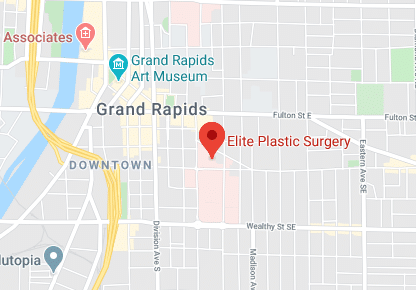
Here is some information about common scars and possible revision approaches that we use at Elite.
How do scars form?
First, a little biology. Scars form when the dermis (the skin’s second layer) is damaged. To mend the wound, the body forms new collagen and this creates a scar. This new scar tissue has a different texture and quality than the surrounding tissue. Scars form after a wound is completely healed.
Patience at first
Scars usually are at their ugliest early on after the injury. Most scars become less noticeable with time. Plus, we can treat some scars with steroids to relieve tenderness and itching, and to possibly shrink them.
Because of these factors, we recommend waiting for a year or even longer after your injury before you decide to have scar revision surgery.
Types of scars
Not all scars are created equal. There are different types of scars.
Keloid scars
Keloid scars are thick, puckered, itchy clusters of scar tissue that extend beyond the edges of the original wound or incisions. They are often red or darker in color than the adjacent skin. Keloids develop when the body continues to produce collagen in the area of the injury after a wound has already healed.
Keloid scars are more common in darker-skinned people, and they are most common on the breastbone, on the earlobes, and on the shoulders.
Hypertrophic scars
Hypertrophic scars look like keloid scars with one important difference — they remain within the boundaries of the original wound or incision. Like keloid scars, they are thick, red, and raised. They often improve with time or with steroid injections.
Contractures
Burns or other injuries that create a loss of a large area of skin may form a scar that pulls the edges of the skin together. This process is called contraction and gives this scar its name, contracture. Contractures may affect the adjacent muscles and tendons, restricting normal range of motion and movement.
Surgical revision
In revision surgery, the scar tissue is cut out. How this is done involves the different approaches. Sometimes simply cutting the scar out and closing the incision with tiny stitches vastly reduces the scar. Other times, our Elite surgeons use Z-plasty, a surgical technique used to reposition a scar so that it more closely conforms to the natural lines and creases of the skin, where it will be less noticeable. In Z-plasty, the old scar is removed and new incisions are made on each side, creating small triangular flaps of skin. These flaps are then rearranged to cover the wound at a different angle, creating a “Z” pattern. More complicated options are skin grafts and flap surgery.
If you choose to have scar revision, the experience of your surgeon is paramount to the quality of your results. Trust the experience of the surgeons at Elite to minimize your scar. Call us at 616-459-1907 to schedule a consultation.


No comments yet.